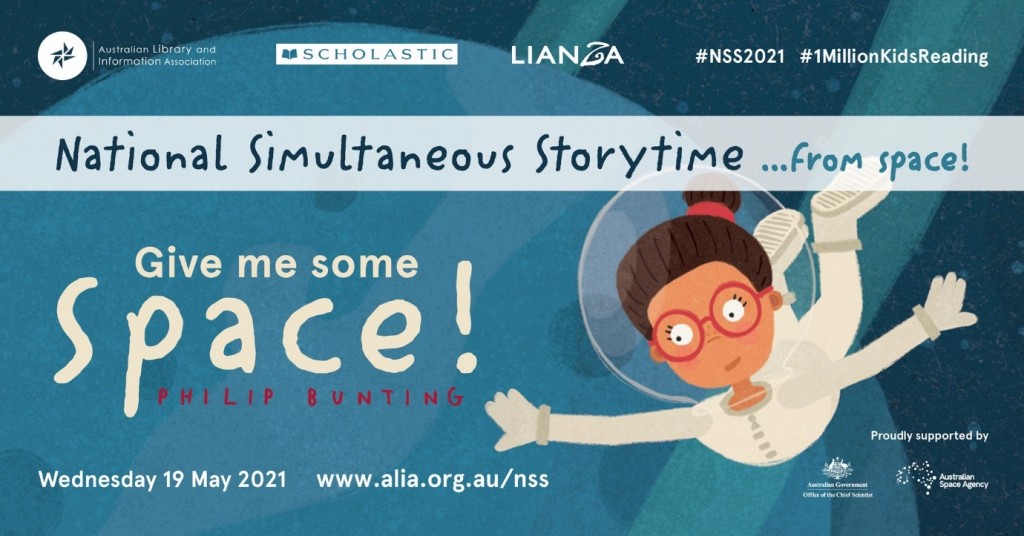Simultaneous Story Time in Space by the Australian Library and Information Association
15 May 2021
After several years of planning and preparation, the Australian Library and Information Association (ALIA) will be streaming its annual National Simultaneous Storytime on Wednesday 19 May, read by an astronaut at the International Space Station.

National Simultaneous Storytime has been a major event on the Australian library calendar since it first occurred in 2001. ALIA wanted to mark the occasion with something big, and when an ALIA Member suggest that we hold it in space, the challenge was accepted. ALIA approached the Australian Space Agency and the Office of the Chief Scientist, who loved the idea and provided support for the event.
National Simultaneous Storytime also features an Australian picture book, and so ALIA approached publisher Scholastic Australia and highly acclaimed author and illustrator Philip Bunting to commission a book for the occasion. His book Give me some Space! follows a young girl Una, as she expresses her lifelong love for all things astronomical. Una dreams of leaving her boring life on Earth behind to follow her mission to find life in space. As well as being a fun and creative book, it was created in consultation with astronomy specialists to ensure that everything portrayed in the book was scientifically accurate.
Once the book was finished, a prototype was created to send to space, with specific physical requirements, such as no sharp surfaces, a specific kind of ink and paper, no rivets or detachable parts, and absolutely no glitter. After thorough cleaning and packaging, the book was placed onto a space shuttle in late 2020 and sent to its destination – the International Space Station.
The book’s central themes were intended to instil in children a curiosity in science and technology – a focus that is echoed in a nationwide citizen science experiment that will accompany National Simultaneous Storytime. The experiment, designed to shed some light on the important issue of climate change, will investigate how, as we change the surface of the Earth from trees and fields to concrete and roads, we change the CO2 levels in the atmosphere, and change the temperature on Earth and its atmosphere. Participants will be recording the temperature at their locations around Australia on Wednesday 12 May 2021, and then share the data with ALIA for collating.
On the International Space Station, astronauts will run their own customised experiment to show how changes to the surface of Earth can result in different temperatures. A recording of the experiment will be shared with participants who will be able to see the results and better understand their own experiment.
Through this opportunity to link our activities with themes of scientific inquiry – particularly for young women – and climate action, ALIA is actively supporting the UN Sustainable Development Goals, by embedding themes of quality education, gender equality and climate action, through partnership with government and educational organisations.
Finally, on Wednesday 19 May 2021, ALIA’s National Simultaneous Storytime will occur. A video from the International Space Station will be produced by Story Time From Space, featuring astronaut Shannon Walker as the reader. Registered participants and organisations will receive a link to the online video of the reading prior to the day, and will hold reading events in their libraries at 11am on the day.
Last year’s event attracted more than 1.2 million participants from across Australia, and this year is looking to be even bigger. Whilst National Simultaneous Storytime is created for the Australian and New Zealand library community, participants from other countries are welcome to participate – last year we had participants from Singapore, Thailand, Malaysia, Hong Kong, Vietnam, Pakistan and Afghanistan.
Registration for the event is free, and more details can be found at https://www.alia.org.au/nss
National Simultaneous Storytime is supported by Scholastic Australia, the Office of the Chief Scientist, and the Australian Space Agency.